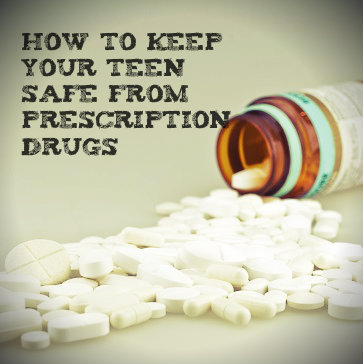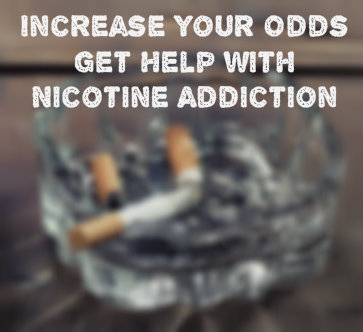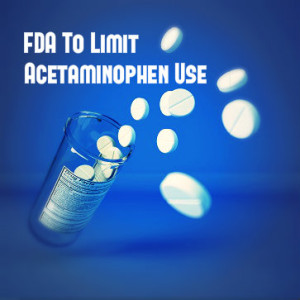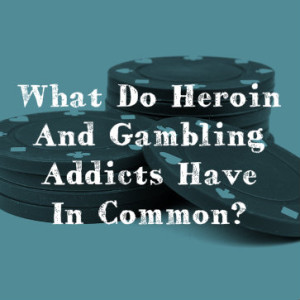Curb Your Shopping Addiction
Tuesday, August 12, 2014Traditionally, the term addiction has been restricted to the description of dependence on a chemical substance, such as drugs or alcohol. Today we have a broader view of what addiction is and many experts recognize what they call behavioral, or process, addictions. Certain behaviors, like gambling, eating, or shopping, can become habitual in a similar way to drug abuse. If you feel you may be starting to cross a line when it comes to your shopping and spending, recognize your behaviors and learn how to curb them before you really get out of control.
Shopping As An Addiction
 There is nothing wrong with enjoying shopping. Even shopping as a regular hobby is not necessarily a bad thing. As with any behavior, though, you may cross the line into addictive territory. Some of the aspects of chemical addictions are similar to what people with a shopping addiction experience. For instance, engaging in a shopping spree may be associated with strong emotions. People who shop compulsively often continue to do so in the face of financial problems. They may let their habit interfere with relationships. These are all commonalities with drug and alcohol addiction.
There is nothing wrong with enjoying shopping. Even shopping as a regular hobby is not necessarily a bad thing. As with any behavior, though, you may cross the line into addictive territory. Some of the aspects of chemical addictions are similar to what people with a shopping addiction experience. For instance, engaging in a shopping spree may be associated with strong emotions. People who shop compulsively often continue to do so in the face of financial problems. They may let their habit interfere with relationships. These are all commonalities with drug and alcohol addiction.
How Do You Recognize A Shopping Addiction?
You have had a bad day at work. You got in a fight with your boyfriend or your husband. The kids are really getting on nerves. What do you do to relieve your stress and boost your mood? If your automatic answer is to go shopping or make a purchase, you might have a problem. Using a behavior, like shopping, to regularly boost your mood and regulate your emotions is a sign of an addictive habit.
Other signs that your shopping is becoming a real problem include buying in spite of financial woes. Compulsive shoppers keep going even when they have drained the bank account. They rack up huge credit card debt. Some even lose their homes because of their habits. Maybe you’re hooked on bargains. Do you buy a new pair of black heels that are half off, even though you have ten pairs in your closet? If so, you could have a problem. Is your shopping disrupting your relationships? Are you hiding your purchases from your partner because you know they will start a fight otherwise? These are all signs that you have a very bad habit.
How Can You Curb Your Shopping Addiction?
The good news is that you can take steps now to reverse your compulsive shopping. Unless you are in so deep that you really can’t stop, these actions will help.:
- To limit how much you spend, only use cash
- Cut up all your credit cards to avoid the temptation to build more debt
- Make a list before you go shopping and stick to it strictly
- Eliminate all impulse buys
- Stay offline if you are a compulsive Internet shopper
What is most important and oftentimes most difficult is figuring out why you shop. When you feel the urge, stop to think about what is driving you to go shopping. Are you stressed? Depressed or anxious? Is there a particular event that is making you feel bad? Face these things head on rather than drowning your emotions in a shopping binge. When you face what you’re feeling you can find better ways to cope. Instead of going shopping, go for a jog. Have a cup of tea and read a book. Take a hot bath or talk to a friend. Whatever you do, don’t give in to the urge to shop. If you still can’t control your urges, seek professional help.
Read On To Find Out If You Have A Food Addiction Or Other Behavioral Addiction
How To Keep Your Teen Safe From Prescription Drugs
Thursday, June 26, 2014The problem of prescription drug abuse is one that touches almost everyone in some way. Millions of Americans have abused prescription drugs and are at risk of becoming addicted or even of having a fatal overdose. Teens are particularly vulnerable and don’t always understand the dangers associated with prescriptions. Teens today are abusing prescription drugs in greater numbers than any other age group. Learn how to keep your teen safe in the face of this epidemic.
Which Drugs Are Teens Abusing?
 Teens are abusing prescription painkillers in record numbers. These are narcotic controlled substances and are highly addictive and easy to overdose on. In the last 20 years, the number of people between the ages of 12 and 17 that abuse these painkillers has increased ten-fold. No teen demographic is excluded from these statistics. Teens from all socioeconomic backgrounds, of all races, and of both genders are abusing painkillers.
Teens are abusing prescription painkillers in record numbers. These are narcotic controlled substances and are highly addictive and easy to overdose on. In the last 20 years, the number of people between the ages of 12 and 17 that abuse these painkillers has increased ten-fold. No teen demographic is excluded from these statistics. Teens from all socioeconomic backgrounds, of all races, and of both genders are abusing painkillers.
The other category of prescription drugs being abused by teens is stimulants. Stimulant medications are typically amphetamines prescribed for children with attention deficit hyperactivity disorder, or ADHD. Teens abuse them mostly as study aids. They have the effect of keeping the user awake and allowing for more focus and concentration. In a competitive academic world, many teens turn to these drugs to get better grades. The risks are high, of course, and include addiction, long-term health consequences and overdose.
How Can I Keep My Teen Safe From Prescription Drugs?
One of the scariest aspects of the trend in teen prescription drug abuse is that parents are largely unaware of the problem. As many as one in ten teens abuses stimulants, yet most parents have no idea what’s going on. How can you keep your teen safe when you don’t know there is a problem? The first thing you can do to protect your teen is to get to know his activities. By developing an open, communicative and trusting relationship with your teen you will be better tuned in to what is going on with him. You will be more likely to notice if something seems off, which could be attributed to drug abuse.
As you educate yourself about prescription drug abuse, also educate your teen. Knowledge is power and many teens abuse these drugs thinking that they are mostly harmless. If doctors prescribe them, sometimes even to kids, they must be safe, right? This attitude is dangerous. Learn about the risks of taking these medications without a doctor’s supervision and share what you learn with your teen.
It is also important that you minimize your teen’s access to drugs. There are many reasons teens abuse drugs, but one reason they may turn to these prescriptions more than most other substances is access. Most people abusing prescription drugs get them from a friend or family member. If anyone in your family has been prescribed a painkiller or stimulant, make sure it is kept in a secure location that your teen cannot access. Teens also get prescriptions from illegal online pharmacies that don’t check for prescriptions. Control your teen’s access to the Internet and check his history from time to time.
The problem of prescription drug abuse is a serious and ongoing one, for both adults and teens. To keep your teen safe from the epidemic of prescription abuse you need to be aware and knowledgeable. Talk to your teen and make sure he knows that he can come to you with problems. Discuss the risks of abusing drugs and restrict his access to them; take these important steps to reduce the chances that he will experiment with prescriptions.
If You Suspect Your Teen Is Abusing Prescription Drugs – Don’t Hesitate – Call Us Now!
Online Drug Trafficking Becoming Alarming
Friday, June 6, 2014A recent survey found that there has been an increase in drugs being sold on the Internet, and the results indicate a rise in global drug use in general.
According to the Global Drugs Survey, 60 percent of respondents reported buying illegal drugs like marijuana and LSD online.
Main Reasons For Online Drug Trafficking Increase
 What’s causing this increase in online drug trafficking? The main reason is sites that allow people to anonymously buy drugs using bitcoin peer-to-peer digital currency. The most famous online drug source was the original Silk Road online market, which was shut down by the Federal Bureau of Investigations in October, 2013. Drug officials also report the increase of online trafficking is because users often face the chance of being robbed or physically assaulted during face-to-face drug exchanges, so they feel that online transactions are safer.
What’s causing this increase in online drug trafficking? The main reason is sites that allow people to anonymously buy drugs using bitcoin peer-to-peer digital currency. The most famous online drug source was the original Silk Road online market, which was shut down by the Federal Bureau of Investigations in October, 2013. Drug officials also report the increase of online trafficking is because users often face the chance of being robbed or physically assaulted during face-to-face drug exchanges, so they feel that online transactions are safer.
Respondents to the Global Drug Survey reported that, just like overall Internet shopping, buying drugs online is faster, cheaper and there is a larger selection. The survey found that over 40 percent of participants said they were buying online for the first time, which proves that the web is a growing resource for drug users.
The overall cause of the increase in online drug purchases can be explained by the increase in drug use overall. The survey found that a third of the respondents between the ages of 18 and 24 used drugs, which had increased from a previous survey showing only a fifth of that amount. The Global Drug Survey collected data from 45 countries and 80,000 individuals.
Marijuana is the drug of choice in many countries. Brazil, France and the United States are countries with the highest rate of marijuana consumption. The survey found that 70 percent of Brazilian and American respondents used marijuana.
Another cause for the increase in global drug use can also be blamed on the legalization of marijuana. Countries around the world seem to have conflicting opinions on legalization. The United Nations reportedly feels that legalization poses a great danger to its country. However, Uruguay legalized the drug’s sale and production last year. In the United States, Colorado and Washington State were the first states to legalize the use of the drug recreationally, though with many limitations. In the Netherlands, possession of marijuana under five grams has been legal since 1976.
Something alarming that the survey found that was only about 20 percent of those 80,000 respondents reported ever seeking help or having feelings that marijuana use had a negative effect on their job or schooling.
Read More About How The War On Drugs Isn’t Effective At Protecting Youth
The Odds For Quitting Smoking Triple With Counseling And Medication
Thursday, April 24, 2014Millions of cigarette smokers across the U.S. are addicted to nicotine, a natural ingredient in tobacco capable of producing harmful, long-term changes in brain chemistry just like a range of other legal and illegal substances of abuse. In most cases, people who attempt to quit smoking do so without the help of an addiction specialist or any other health professional prepared to deal with nicotine addiction. In a study published in March 2014 in the journal Addiction, a team of British and Dutch researchers assessed the likelihood that smokers addicted to nicotine will successfully quit using cigarettes without professional help.
The Basics Of Nicotine Addiction
 Nicotine addiction is related to a nicotine-induced chemical imbalance in the area of the brain responsible for producing pleasurable responses to various activities. This imbalance activates the pleasure center and gives a smoker an incentive to introduce nicotine into the brain again and again over time. This incentive is heightened by the fact that any single episode of nicotine exposure only briefly produces its pleasurable effects. Over 40 million American adults smoke cigarettes; since most habitual smokers are nicotine addicts, nicotine addiction constitutes the most widespread form of substance addiction in the U.S. More than two-thirds of the people who smoke cigarettes want to quit, according to figures compiled by the federal Centers for Disease Control and Prevention.
Nicotine addiction is related to a nicotine-induced chemical imbalance in the area of the brain responsible for producing pleasurable responses to various activities. This imbalance activates the pleasure center and gives a smoker an incentive to introduce nicotine into the brain again and again over time. This incentive is heightened by the fact that any single episode of nicotine exposure only briefly produces its pleasurable effects. Over 40 million American adults smoke cigarettes; since most habitual smokers are nicotine addicts, nicotine addiction constitutes the most widespread form of substance addiction in the U.S. More than two-thirds of the people who smoke cigarettes want to quit, according to figures compiled by the federal Centers for Disease Control and Prevention.
Smoking Cessation Techniques
The main smoking cessation technique available to a cigarette user who does not seek professional assistance is non-prescription nicotine replacement therapy. This approach relies on the use of over-the-counter nicotine-containing gum, lozenges or patches to gradually reduce an individual’s dependence on nicotine and help him or her avoid the unpleasant symptoms of nicotine withdrawal (which commonly act as a strong deterrent to smoking cessation efforts). Techniques used under the guidance of an addiction specialist or some other form of health professional include prescription nicotine replacement therapy (nasal sprays, inhalers or patches) and prescription nicotine-free medications such as varenicline (Chantix) or buproprion (Zyban), as well as forms of counseling that include short training and motivational sessions called brief interventions, longer group or individualized counseling sessions, remote counseling sessions that rely on phone or Internet technology and a form of in-person practical training called behavioral therapy. As a rule, a combination of professionally administered medication and counseling produces results that are superior to an all-medication or an all-counseling approach.
Chances Of Quitting Success
In the study published in Addiction, researchers from University College London and the Maastricht University Medical Centre used information gathered from a large-scale survey project called the Smoking Toolkit Study to compare the chances of smoking cessation success among people who make their own efforts to the chances of success among people who seek professional help. All told, data was collected from 10,335 smoking adults in England who had tried to stop using cigarettes one time or more in the year prior to the survey. The researchers broke these individuals down into four groups: people who received both professionally administered counseling and medication while trying to quit, people who only received professionally administered medication while trying to quit, people who tried to quit on their own with non-prescription nicotine replacement products and people who tried to quit on their own without using non-prescription nicotine replacement.
The researchers concluded that, compared to smokers who try to quit on their own without nicotine replacement products, smokers who try to quit while receiving professionally administered counseling and medication successfully stop smoking more than three times as often. Smokers who try to quit while only receiving prescription medication successfully stop smoking over 1.5 times more often than smokers who quit on their own without nicotine replacement products. Smokers who quit while only using non-prescription nicotine replacement successfully stop smoking about 0.96 times more often than those individuals who try to stop without any form of non-prescription medication or professional help.
The authors of the study published in Addiction note that, while there is some difference in the rates of smoking cessation success for people who only use over-the-counter nicotine replacement and people who use no assistance at all, the results in these two groups are close enough to qualify as “similar.” In contrast, people who receive a combination of counseling and prescription medication or just prescription medication clearly have improved odds of successfully quitting smoking.
How Can Twitter Can Be Used To Monitor Drug Use And HIV?
Wednesday, April 23, 2014Social media has revolutionized the way we communicate, but can it be used to pick out at-risk areas for drug abuse, risky behaviors and HIV? According to a new study, the answer may well be yes. There are limitations to the approach, but our penchant for broadcasting our thoughts, intended actions and feelings through publicly accessible sites like Twitter could provide a pre-emptive warning about areas particularly at risk for a wide range of health issues. In the past, the approach has been suggested as a method of predicting influenza outbreaks, but the new study suggests that a spike in the number of people using key phrases like “get high” or “sex” in a particular area may be used to determine where to target public health programs relating to drug use and HIV.
The study comes from a new center at UCLA intended as a multi-disciplinary effort to investigate the potential of social media and cell phones to enable prediction (and hopefully the changing) of behavior in the population. The new piece of research is primarily focused on the prevention of HIV, but one of the key ideas the research was based on is the link between risk behaviors like sex or drug use and how they spread. The methodology of the study was fairly straightforward: collect a lot of tweets, use an algorithm to search for words and phrases indicating risky behavior and drug use (with a focus primarily on stimulant use) and plot them on a map. The finalized map was then compared to HIV data to see if the prime areas of suggestive tweeting correlated with the prevalence of HIV. In total, the researchers collected over 550 million tweets from May to December 2012, and compared the final map to an interactive map of HIV prevalence in the US. However, the most up-to-date information available when the researchers were conducting the study was from 2009.
Does Twitter Work For Tracking?
 The sample they analyzed contained over 8,500 tweets relating to sexual behavior and over 1,300 suggesting stimulant use. By state, California, Texas, New York and Florida had the biggest proportion of suggestive tweets, but the main hotspots identified in terms of the raw number of tweets identified were the District of Columbia, Delaware, Louisiana and South Carolina. The largest per-capita rates (taking state populations into account) were found in Utah, North Dakota and Nevada. However, for the purposes of the analysis, the focus was on the location of tweets in terms of counties, since state-level data wouldn’t offer much potential for a truly targeted approach.
The sample they analyzed contained over 8,500 tweets relating to sexual behavior and over 1,300 suggesting stimulant use. By state, California, Texas, New York and Florida had the biggest proportion of suggestive tweets, but the main hotspots identified in terms of the raw number of tweets identified were the District of Columbia, Delaware, Louisiana and South Carolina. The largest per-capita rates (taking state populations into account) were found in Utah, North Dakota and Nevada. However, for the purposes of the analysis, the focus was on the location of tweets in terms of counties, since state-level data wouldn’t offer much potential for a truly targeted approach.
The researchers then compared their findings to the data on HIV prevalence, and found a statistically significant relationship between the locations with the most risk-related tweets and reported cases of HIV. Although this is very encouraging, a big issue with the study is that the HIV data came from 2009, three years before the tweets were collected. While it stands to reason that the areas with the largest numbers of risk-related tweets would be those with the greatest prevalence of HIV, the problem of old data does hold back the implications of this research. If the prevalence of HIV didn’t change much over the intervening three years, then the study shows a correlation, but it doesn’t necessarily mean it’s possible to predict an outbreak.
Social Media Strategy In The Future
The biggest problem with the approach from the new study is getting up-to-date information about HIV prevalence, or indeed that of any condition or issue being monitored. The researchers suggest that for the approach to work there would need to be some form of “gold standard” for regularly updated information, and this is well within the realm of possibility. If a similar study conducted with up-to-date data comes up with comparable findings, there will undoubtedly be more incentive to invest money in the approach.
The other issue with the potential for applying this approach on a larger scale is the sheer volume of data required. The research used over half a billion tweets for a period of six months, and each one had to be checked using the algorithm to produce the final data. It’s called “big data” for obvious reasons, but it’s becoming increasingly important because we can theoretically collect and use this much information for the purposes of monitoring potential disease outbreaks. Studies like this show that it’s possible, but whether we’re really ready to start monitoring huge volumes of data like this all the time and for myriad purposes is another matter entirely.
Prospective Prevention Of Drug Addiction
If we set aside the organizational and logistical challenges presented by this approach—since it will be feasible in the near future—it could have profound consequences for how we target treatment, education and prevention programs for drug addiction. It’s been suggested as a method to help prevent the use of Adderall as a “study drug,” and if applied as a more wide-ranging strategy, it could help us identify areas where drug use is burgeoning. Effectively, it presents the very real possibility for the widespread prevention of drug addiction, not just the treatment of it.
Read How To Determine If you Have A Social Media Addiction
FDA Announces Plans To Limit Acetaminophen Use
Wednesday, March 5, 2014The Food and Drug Administration (FDA) has asked healthcare professionals to stop prescribing high doses of the painkiller acetaminophen, which is used in Tylenol, Vicodin and Percocet.
The FDA hopes to reduce liver damage in patients taking high doses. Because many drugs contain acetaminophen, the chances of an inadvertent overdose for someone taking several different prescriptions are likely and very dangerous. Acetaminophen overdose is the leading cause of acute liver failure.
How Drug Makers And Pharmacists Will Be Affected
 Drug makers are also being asked to consider limiting the amount of acetaminophen in prescription drugs to 325 milligrams or less per pill. Over half of drug makers have agreed. Another step the FDA has taken is recommending pharmacists who receive multiple prescriptions from doctors that, when combined, contain more than 325mg of acetaminophen per dose, contact the doctor who prescribed it and discuss other options.
Drug makers are also being asked to consider limiting the amount of acetaminophen in prescription drugs to 325 milligrams or less per pill. Over half of drug makers have agreed. Another step the FDA has taken is recommending pharmacists who receive multiple prescriptions from doctors that, when combined, contain more than 325mg of acetaminophen per dose, contact the doctor who prescribed it and discuss other options.
Are Over The Counter Drugs Included In FDA’s Limit Of Acetaminophen?
The FDA is also attempting to make drug makers take any drugs containing more than 325 mg of acetaminophen off the market. The warning issued by the FDA does not apply to Tylenol and other over the counter drugs… for now.
Acetaminophen And Alcohol – Dangerous Combination
The FDA explained there is no available data to show that more than 325 mg of acetaminophen provides additional benefits, but it does increase the risk of liver problems. When combined with alcohol, the effects of acetaminophen are even more dangerous. They also report that acetaminophen has been known to cause life-threatening skin reactions, including blisters, serious rashes and the detachment of the upper surface of the skin.
Preventing Acetaminophen Overdose
To decrease chances of overdose, individuals taking pain medications and other medications should read the labels of their prescriptions. The FDA maximum recommendation for adults is no more than 4,000 mg of acetaminophen a day.
Read More On The FDA Urges Public To Beware Of Phony Adderall Sold On The Internet
Do Heroin And Gambling Addicts Share Similar Brain Changes?
Tuesday, February 25, 2014Substance addiction, which stems from the improper use of drugs or alcohol, is the classic model of physical addiction. It contrasts with behavioral addiction, a newly acknowledged form of addiction not centered on substance use. In a study published in January 2014 in the journal Drug and Alcohol Dependence, researchers from the U.S. and China compared the brain effects of one particular form of substance addiction—heroin addiction—to the brain effects of gambling disorder, the only officially recognized form of behavioral addiction in the U.S. These researchers concluded that the two conditions produce differing but overlapping brain changes.
Substance Use Disorders
Substance addiction is one of the two major components of an officially diagnosable condition called substance use disorder (which also includes serious, non-addicted substance abuse). People affected by this form of addiction experience long-term changes in their brains’ chemical status brought about by the repeated use of excessive amounts of alcohol or any one of a range of drugs or medications.
These changes occur because the brain receives enough exposure to alcohol, drugs or addictive medications to begin treating this exposure as the norm rather than the exception.
Symptoms Of Substance Addiction
 Strong and recurring urge to drink or use drugs
Strong and recurring urge to drink or use drugs- Corresponding inability to voluntarily limit substance intake
- Increasing tolerance to the effects of drugs or alcoho
- Withdrawal symptoms when the “normal” amount of alcohol or drugs is unavailable
- Destructive pattern of behavior focused primarily on substance use
Similarities Between Substance Addiction And Behavioral Addiction
Behavioral addiction produces a series of changes that mirror many key aspects of substance addiction. However, instead of stemming from excessive drug or alcohol intake, this form of addiction stems from excessive reliance on (or participation in) a specific activity.
- Strong and recurring urge to participate in a given behavior
- Inability to voluntarily limit that behavior
- Establishment of a destructive pattern of conduct focused on the behavior in question
Like substance addiction, behavioral addiction also creates long-term changes in the way the brain does its job. The American Psychiatric Association includes both substance addiction and behavioral addiction in a large grouping of conditions known collectively as substance-related and addictive disorders. There are a number of officially recognized substance-related disorders; however, as of 2014, gambling disorder (problem gambling, compulsive gambling, pathological gambling) is the only recognized form of addictive disorder.
Comparing The Brain Effects On Heroin Addiction Vs. Gambling Disorders
In the study published in Drug and Alcohol Dependence, researchers from the University of Southern California, the Chinese Academy of Sciences and China’s Guiyang Medical University conducted testing designed to compare the brain impairment of heroin addiction to the brain impairment of gambling disorder (identified in the study as pathological gambling).
Participants in this testing included 58 heroin addicts maintaining abstinence from drug use, 60 people diagnosed with gambling disorder and 60 generally healthy people unaffected by either heroin addiction or gambling disorder. Each of these participants took part in a test that assesses a critical form of short-term memory called working memory, as well as a separate test that assesses the ability to make decisions and control impulsive behaviors. The researchers compared the testing results of both the heroin addicts and the compulsive gamblers to the testing results of the healthy study participants.
They concluded that, compared to healthy people, heroin addicts experience a significant decline in their ability to use working memory, make decisions and control their actions. People affected by gambling disorder also experience problems making decisions and controlling their behaviors; however, they do not experience problems with their working memory. In addition, the researchers found that the brain impairments associated with heroin addiction grow worse over time. In contrast, the brain impairments associated with gambling disorder do not appear to grow worse or have a greater impact on people heavily addicted to gambling.
Behavioral Actions And Memory Problem Differences In Addiction
Based on their findings, the authors of the study published in Drug and Alcohol Dependence concluded that decision-making and impulse control problems appear to be central features of addiction, whether that addiction stems from a substance or a behavior. Memory problems, on the other hand, appear to be specific to substance addiction (or, at the least, heroin addiction). Further research will be needed to determine if other forms of behavioral addiction not officially recognized in the U.S. (such as sex addiction and Internet addiction) produce the same changes in brain function as gambling disorder.
Read More About The Importance Of Identifying Signs Of Substance Abuse In Bipolar Patients
What Is Kratom And What Are Its Health Risks?
Thursday, January 23, 2014Kratom is the common name for an herbal drug obtained from a tree species called Mitragnya speciosa. This drug has a history of use in Southeast Asia and current evidence indicates that its use is currently on the rise in the U.S., where consumers can make legal purchases over the Internet. Kratom apparently has the potential to


